72 Miles to Go...:
An Interview with Director Jo Bonney
Posted on: March 5, 2020
Education Dramaturg Ted Sod spoke with Jo Bonney about her work on 72 Miles to Go...
Ted Sod: Where were you born and educated? Which teachers and artists have had a profound influence on you as a director?
Jo Bonney: I was born in Australia and educated at Sydney University and Sydney College of the Arts. After graduating, I traveled for several years and probably the most profound influence on my later directing career was this early exposure to the wonderfully diverse storytelling traditions in the many countries I spent time in.
Later, I was intrigued and excited by the work I encountered in the downtown New York scene in the ‘80s and ‘90s directed by artists such as JoAnne Akalaitis (working with Mabou Mines), Richard Foreman and Ping Chong. I loved the way Bill T Jones and Arnie Zane were fusing dance and verbal storytelling. A lot of the work I was attracted to was happening at The Public Theater under its founder, Joe Papp, where his commitment to new plays by diverse writers was not necessarily the norm in theatre at that time. His support was hugely important—he literally encouraged me to define myself as a director and to use my background coming out of art school to start finding my own vision as a director.
TS: Why did you choose to direct Hilary Bettis’s 72 Miles to Go…? How are you collaborating with Ms. Bettis on this new play? What questions did you ask her about her play? Are you involved with the rewriting/ development process?
JB: My career as a director has been committed to new play development and production, so I've read hundreds of new plays in all stages of development. It's always exciting to read a new script that tackles a contemporary subject in a way that feels fresh and adds insight so I really responded to Hilary's writing voice. It's deceptively simple and never panders to sentimentality. So much of the humor and emotional weight of the story felt authentic and arising from a place of personal family experience. I believe we're all hyper-aware of the volatile subject of immigration in this country, but we lose sight of the individuals in the midst of the politics surrounding the subject. Perhaps because I'm an immigrant also, I've always been curious as to what it means to be an American and how attitudes towards previous waves of immigrants have morphed over time.
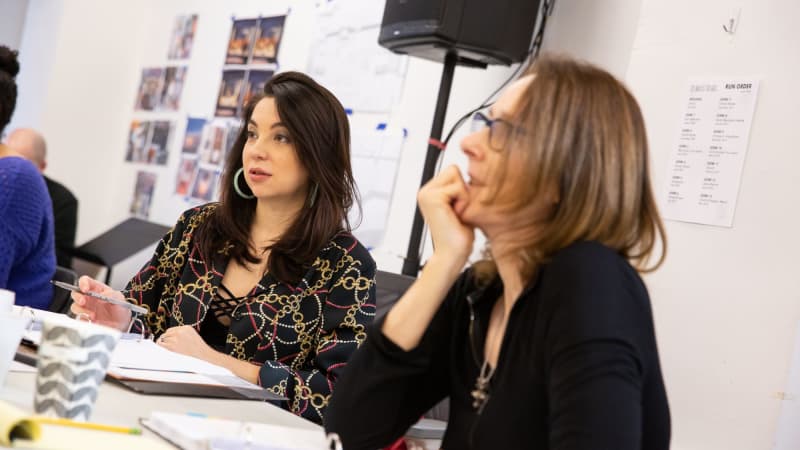
Hilary Bettis and Jo Bonney
© Jeremy DanielI've been involved with many plays starting with just a few scenes or the first act but Hilary's script was already in a very realized form when I first read it. A workshop in October was extremely productive because, until a play goes through its first full production, the rewriting/ development process is always ongoing. We gained some insight into how people received the story and where we could clarify moments. Both of us are super wary of unnecessary exposition but found that there were moments when an added reference to a date or event in the intervening months was asked for in keeping the audience in the loop. My relationship with playwrights is always one of putting myself in the audience seat, of simply asking questions—the most basic 'Why', 'How', 'What if'.
TS: Can you give us some insight into your process as a director. How did you prepare to direct this play? Did you have to do a lot of research in order to enter the world of the play? What is the atmosphere in your rehearsal room like?
JB: My first step is to simply read the script over and over again, becoming familiar with each character and their journey and the sound of their voices. Over multiple talks with my playwright, I delve deeper, I want to understand what their initial impulse was in writing this particular story? Is there personal history here? Where are they in the process and what do they hope to achieve sharing the story with others? I start seeing possibilities in my mind's eye, how it might live onstage.
Going into 72 Miles, I felt a deep obligation to educate myself on the different policies under various U.S. Governments. I also, serendipitously, was set to travel in Mexico for a month in the Fall and it gave me an amazing opportunity to talk with dozens of people and gain more personal insights. One of my biggest take-aways was a greater understanding of the history of the America/ Mexico relationship and the obvious (to me now) fact that so many Mexican families have roots in the land, now part of America, that predates the first colonies.
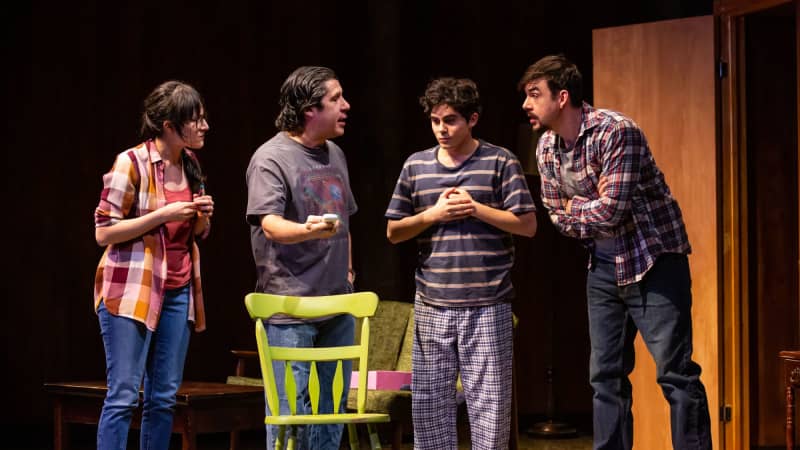
Jacqueline Guillén, Triney Sandoval, Tyler Alvarez, and Bobby Moreno
© Jeremy DanielMy primary focus in the entire process, in the rehearsal room, in tech, and in the theatre is to facilitate an open, collaborative atmosphere. We all, the actors, the designers, and my stage management team, create the production together out of our passion to tell the playwright's story so I'm excited by all possibilities into the room.
TS: What do you think 72 Miles to Go… is about? Can producing this play in 2020 have an impact on the treatment of undocumented immigrants in this country?
JB: First and foremost, 72 Miles is about family, and specifically, an American family. Hilary and I have discussed that it is both a love story between Anita and Billy and a coming of age story focusing on their three children, Christian, Eva and Aaron, and how they navigate their formative years. The family shares the universal life markers that we're all familiar with—birthdays, anniversaries, the Prom, Graduation, first jobs, marriages and the birth of children.
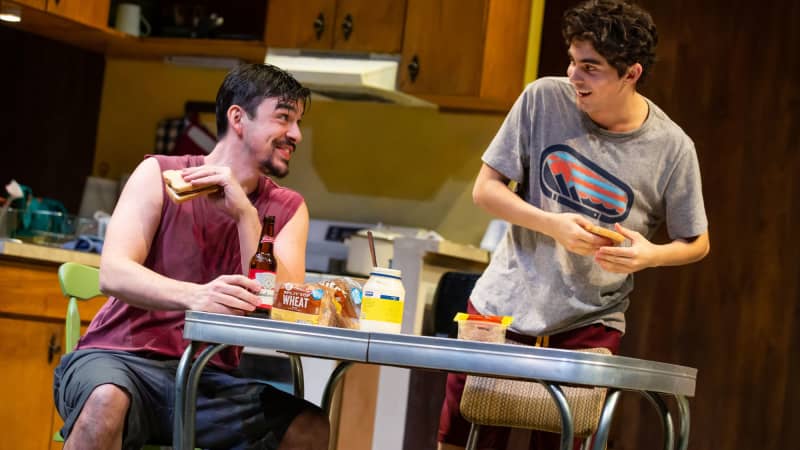
Bobby Moreno (Christian) and Tyler Alvarez (Aaron)
© Jeremy DanielThe family is a complex mix of multi-generational Mexican-American, first-generation American (America being the only country and culture they have ever known) and undocumented immigrants. This places the family and the lives of these children at the center of the bigger socio/political drama of America's troubled, ever-changing attitude to its immigrants. How that affects the individual family members over the course of eight years is the journey of the story. I certainly can't say that presenting this play will ultimately impact the politics we are currently experiencing but what I hope is that it might refocus the narrative on the individual.
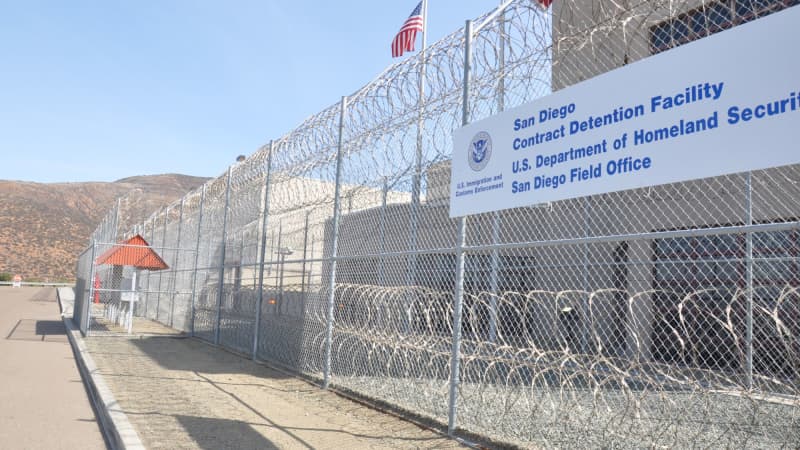
The Otay Mesa Detention Center
© BBCTS: What did you look for in casting the actors? What traits did you need?
JB: We were keen to cast not just Latinx actors but as many Mexican-American actors as possible. A big focus of the casting was on creating a believable family and an ensemble who were genuinely committed to telling this story. It's challenging to span eight years, particularly with teenage characters, and we lucked out with our amazing cast.
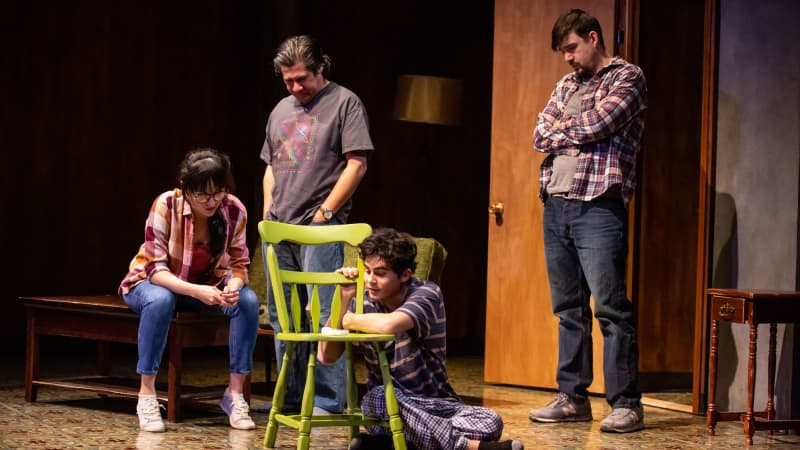
Jacqueline Guillén, Triney Sandoval, Tyler Alvarez, and Bobby Moreno
© Jeremy DanielTS: How will the play manifest itself visually? How are you collaborating with your entire design team? Will there be original music?
JB: I have a long history with several of my collaborators and, as always, rely on their input and insights to help frame the story. The fragility of “home” for this family gave Rachel Hauck, my set designer, and me the foundation for the set concept.
The span of time (eight years, from 2008-2016, under the Obama administration) and multiple locations demanded a fluid space which I knew Lap Chi Chu, our lighting designer, could carve and shape beautifully.
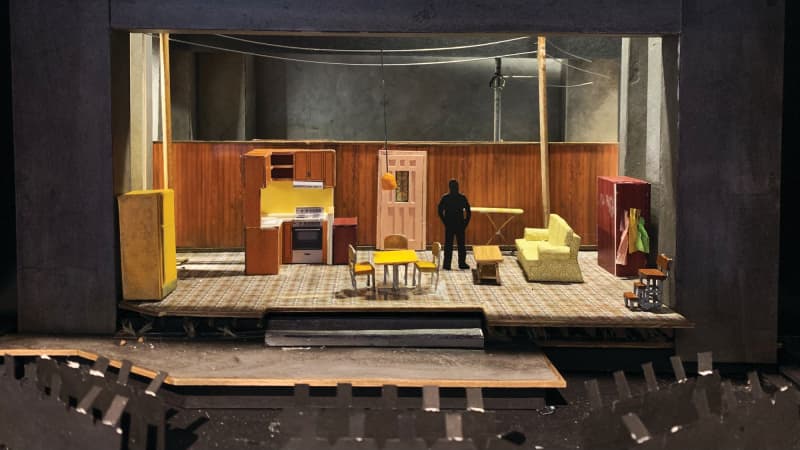
Set model by Rachel Hauck
I place complete confidence in Emilio Sosa, who I've collaborated with for nearly 20 years, to track and detail the costumes that will take characters from their teens to 20s. The soundscape of the play is something that my sound designer, Elisheba Ittoop has a wonderful take on. As she has remarked, kids like her and those in the play are kinds of “third culture kids,” blending musical styles and elements to make a hybrid fusion that suits them. This is particularly the case in border sister cities like Tucson and Nogales.
TS: What keeps you inspired as an artist? What other projects are you working on?
JB: Not to be glib, but life is pretty inspiring—it keeps demanding that we look around and take responsibility and tell the stories of our time. I'm excited a play that I directed two seasons ago, Cost of Living, written by Martyna Majok, is moving to Broadway and will have the chance of being seen by many more people in the Fall. It's very beautiful, painful and funny and was awarded the Pulitzer Prize in 2018.
TS: Any advice for a young person who wants to direct for the theatre?
JB: The possibilities of theatre are wonderfully open but it can also be a bit of a hermetically sealed bubble. I'd encourage them to keep engaged with all forms of art, to experience as much dance, live music, and visual art as theatre and to travel, when possible, for a different perspective. Remain hungry to tell the stories they're personally excited and challenged by.
